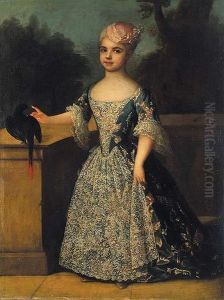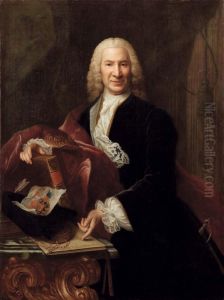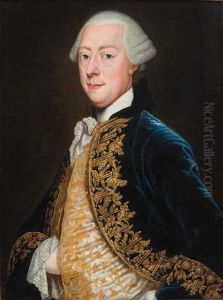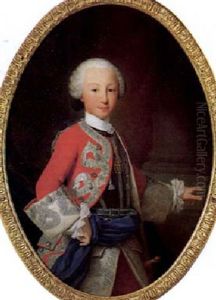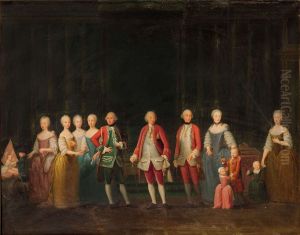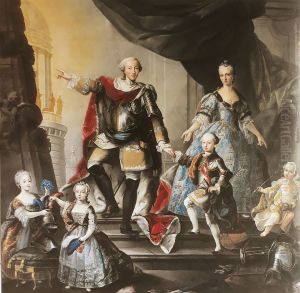Giuseppe Dupra Paintings
Giuseppe Dupra, an Italian artist born in 1703 in the Piedmont region of Italy, was a notable figure in the 18th-century European art scene. His journey in the arts began under the influence of the Baroque and Rococo movements, which were predominant during his early years. Dupra's work primarily focused on portrait painting, capturing the aristocracy and the burgeoning bourgeoisie of his time with a detailed and refined touch that was characteristic of the period.
Despite the limited documentation on his early life, it is known that Dupra’s artistic talents were recognized and nurtured from a young age. He likely received his initial training within local workshops or under the tutelage of a master artist, as was common practice. Over time, Dupra developed a distinctive style that emphasized the elegance and sophistication of his subjects, making him a sought-after portraitist among the elite.
Throughout his career, Dupra traveled extensively across Europe, which allowed him to absorb various artistic influences and techniques. This exposure is evident in the evolution of his style, which incorporated elements from different European art movements, enriching his own work. He had the opportunity to study and work in major art capitals such as Rome and Paris, where he was exposed to the works of contemporary masters and ancient art, further influencing his artistic development.
Dupra's contributions to the art world were not limited to his portraits. He also engaged in religious and historical paintings, though these works are less known and studied. His ability to capture the human form with sensitivity and depth, however, is undisputed and is what primarily defines his legacy.
Giuseppe Dupra passed away in 1784, leaving behind a rich portfolio that offers insight into the cultural and social dynamics of his era. His portraits, in particular, serve as historical documents that capture the nuances of 18th-century European society. Despite not being as widely recognized as some of his contemporaries, Dupra's work is appreciated by art historians and collectors for its craftsmanship and the glimpse it offers into the past.
